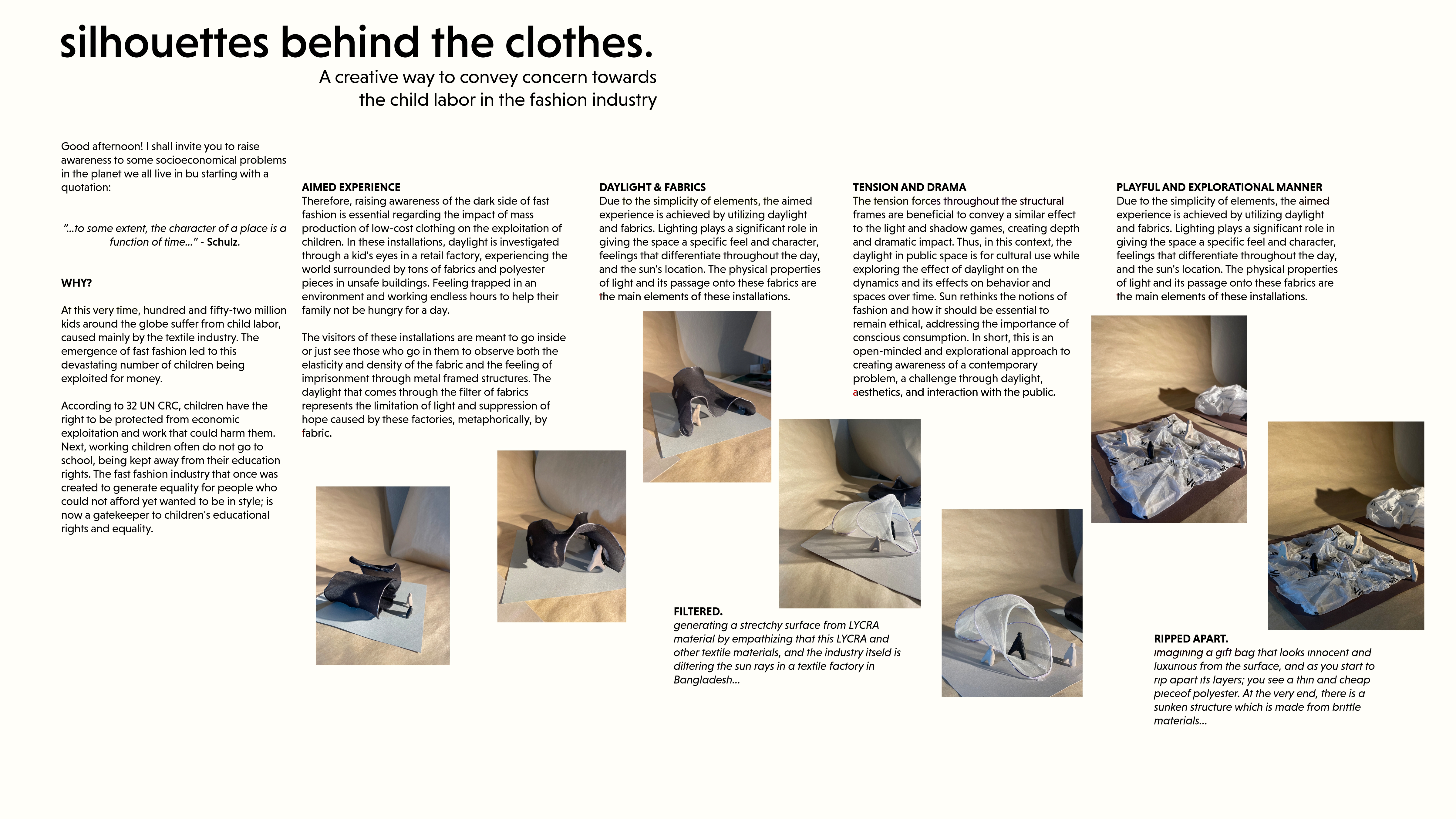Silhouettes Behind the Clothes

Category
Daylight investigations - Region 2: Central and Eastern Europe and the Middle East.
Students
Ayşe Irmak Çelik
Öykü Topcuoğlu
Teacher
Merve Aslı Hetemoğlu
School
Bilkent Üniversitesi
Country
Turkey
Download
Download ↓
“…to some extent, the character of a place is a function of time…” – Schulz.At this very time, hundred and fifty-two million kids around the globe suffer from child labor, caused mainly by the textile industry. The emergence of fast fashion led to this devastating number of children being exploited for money. According to 32 UN CRC, children have the right to be protected from economic exploitation and work that could harm them. Next, working children often do not go to school, being kept away from their education rights. The fast fashion industry that once was created to generate equality for people who could not afford yet wanted to be in style; is now a gatekeeper to children’s educational rights and equality. Therefore, raising awareness of the dark side of fast fashion is essential regarding the impact of mass production of low-cost clothing on the exploitation of children. In these installations, daylight is investigated through a kid’s eyes in a retail factory, experiencing the world surrounded by tons of fabrics and polyester pieces in unsafe buildings. Feeling trapped in an environment and working endless hours to help their family not be hungry for a day. The visitors of these installations are meant to go inside or just see those who go in them to observe both the elasticity and density of the fabric and the feeling of imprisonment through metal framed structures. The daylight that comes through the filter of fabrics represents the limitation of light and suppression of hope caused by these factories, metaphorically, by fabric.Due to the simplicity of elements, the aimed experience is achieved by utilizing daylight and fabrics. Lighting plays a significant role in giving the space a specific feel and character, feelings that differentiate throughout the day, and the sun’s location. The physical properties of light and its passage onto these fabrics are the main elements of these installations. The tension forces throughout the structural frames are beneficial to convey a similar effect to the light and shadow games, creating depth and dramatic impact. Thus, in this context, the daylight in public space is for cultural use while exploring the effect of daylight on the dynamics and its effects on behavior and spaces over time. Sun rethinks the notions of fashion and how it should be essential to remain ethical, addressing the importance of conscious consumption. In short, this is an open-minded and explorational approach to creating awareness of a contemporary problem, a challenge through daylight, aesthetics, and interaction with the public. The design process revolved around exploring how different textures and materials are used in these factories for textiles and working with them in the context of daylight and shadows. Old gift wrapping papers, polyester fabric pieces, old cotton t-shirts, lycra, and metal strings have been used.The “Silhouettes” are generated to convey how the kids who work in these factories are not getting the media exposure they deserve. To convey these silhouettes representing the kids behind the fast-fashion industry, opacity became a playful element to work with in terms of changing materials, or only their densities, thickness, and so on.

































